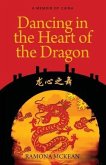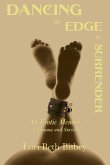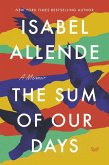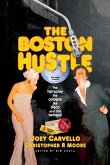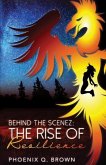As Director at The Bronx Historical Society, I am always looking for striking reminiscences of life and culture in The Bronx. Willie Estrada's The Dancing Gangsters of the South Bronx is one of the most compelling memoirs on "growing up in the Bronx" during the 1960s and 1970s that I have encountered. Willie throughout interweaves difficult memories of coming of age Boricua in a South Bronx increasingly devastated by structural and individual racism, capital flight, heroin addiction, gang violence, arson, and housing deterioration, and urban renewal schemes, on the one hand, with tactile recollections of the joy and community he was able to find in music and dance-in spite of the desolation all around him-on the other. Willie's periodic analyses of the structural and individual factors that shaped his adolescence and young adulthood in the South Bronx are piercing, and his occasional personal asides add complex layers of texture to his reminiscences. Most importantly, Willie provides unique historical insight into a period of South Bronx culture that is often overlooked-the years immediately before the emergence of hip hop. Traditional narratives often give sole credit to early hip hop-in the dynamic sense of the mosaic of artistic expressions, musical experimentation, and cultural fusions that emerged in the South Bronx of the late 1970s-with ending, for a period of time, internecine gang warfare in the borough. Willie challenges such a straightforward periodization by drawing attention to a slightly earlier moment in the vibrant, multi-ethnic musical and dance cultures of The Bronx. It was, Willie convincingly insists, the relatively short-lived but nonetheless momentous dance jams at St. Mary's Recreation Center that first brought peace to the borough during the early 1970s (even if this peace did not last). These dance jams were also instrumental in the elaboration and formalization of the Latin Hustle, which before this point in time was a less developed set of dance steps practiced primarily by Boricua teens at house parties and in small basement clubs in the South Bronx. Willie's memoir persuades, therefore, that the dances at St. Mary's Recreation Center, organized primarily by teenage Boricuas, deserve a far more central place in the history of cultural developments in The Bronx of the 1970s than they have hitherto received. Willie's narration of his dance, personal, and professional life after the St. Mary's jams is simultaneously poignant and inspiring. All in all, Willie's is a top-notch memoir that labors with both painful and exuberant memories, some of which are worked and reworked from various angles, and gives readers a palpable sense of what it was like to come of age struggling, laughing, fighting, dancing, and loving as a Boricua in the "burning" South Bronx. Steven Payne, Ph.D. Director "The Bronx Historical Society."
Hinweis: Dieser Artikel kann nur an eine deutsche Lieferadresse ausgeliefert werden.
Hinweis: Dieser Artikel kann nur an eine deutsche Lieferadresse ausgeliefert werden.



